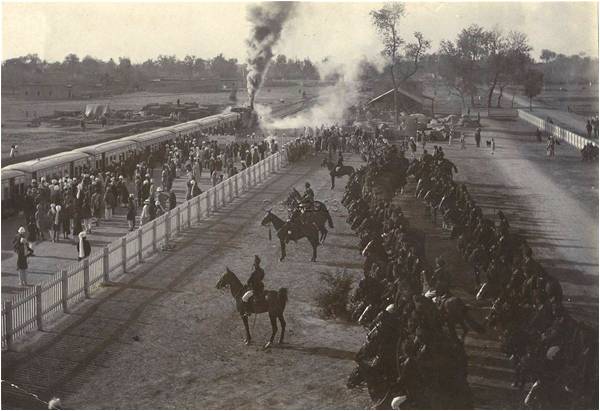
A train arrives at Bannu railway station as troops wait on horses in an undated photograph likely taken circa 1920.
The present-day downtown Bannu was founded in 1848 by British soldier and administrator, and “Hero of Multan”, Herbert Benjamin Edwardes. According to the Imperial British Gazetteer, a “fort, erected at the same time, bore the name of Dhulipgarh, in honour of the Maharaja of Lahore; and the bazar was also known as Dhulipnagar (Dalipnagar). A town gradually grew up around the bazar, and many Hindko speaking Hindu traders moved there from Bazar Ahmad Khan, which had formed the commercial center of the Bannu valley prior to annexation...
“The cantonment centers in the fort of Dhulipgarh. Its garrison consists of a mountain battery, a regiment of native cavalry, and two regiments of infantry.”
Bannu was a key military base for punitive operations in the tribal areas in the north.
The present-day downtown Bannu was founded in 1848 by British soldier and administrator, and “Hero of Multan”, Herbert Benjamin Edwardes. According to the Imperial British Gazetteer, a “fort, erected at the same time, bore the name of Dhulipgarh, in honour of the Maharaja of Lahore; and the bazar was also known as Dhulipnagar (Dalipnagar). A town gradually grew up around the bazar, and many Hindko speaking Hindu traders moved there from Bazar Ahmad Khan, which had formed the commercial center of the Bannu valley prior to annexation...
“The cantonment centers in the fort of Dhulipgarh. Its garrison consists of a mountain battery, a regiment of native cavalry, and two regiments of infantry.”
Bannu was a key military base for punitive operations in the tribal areas in the north.

